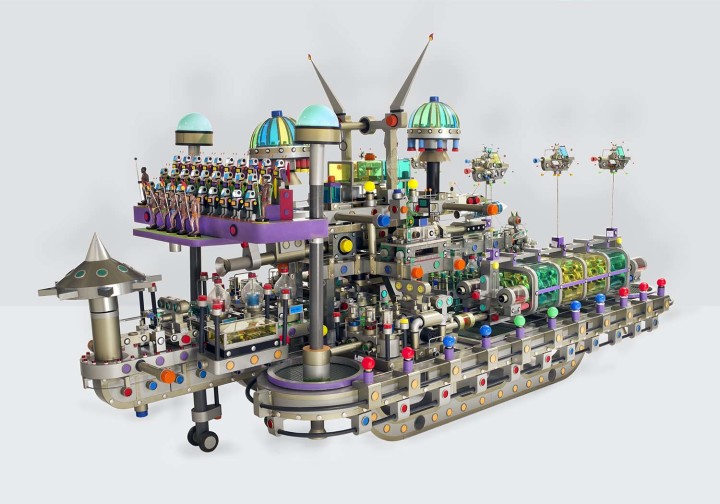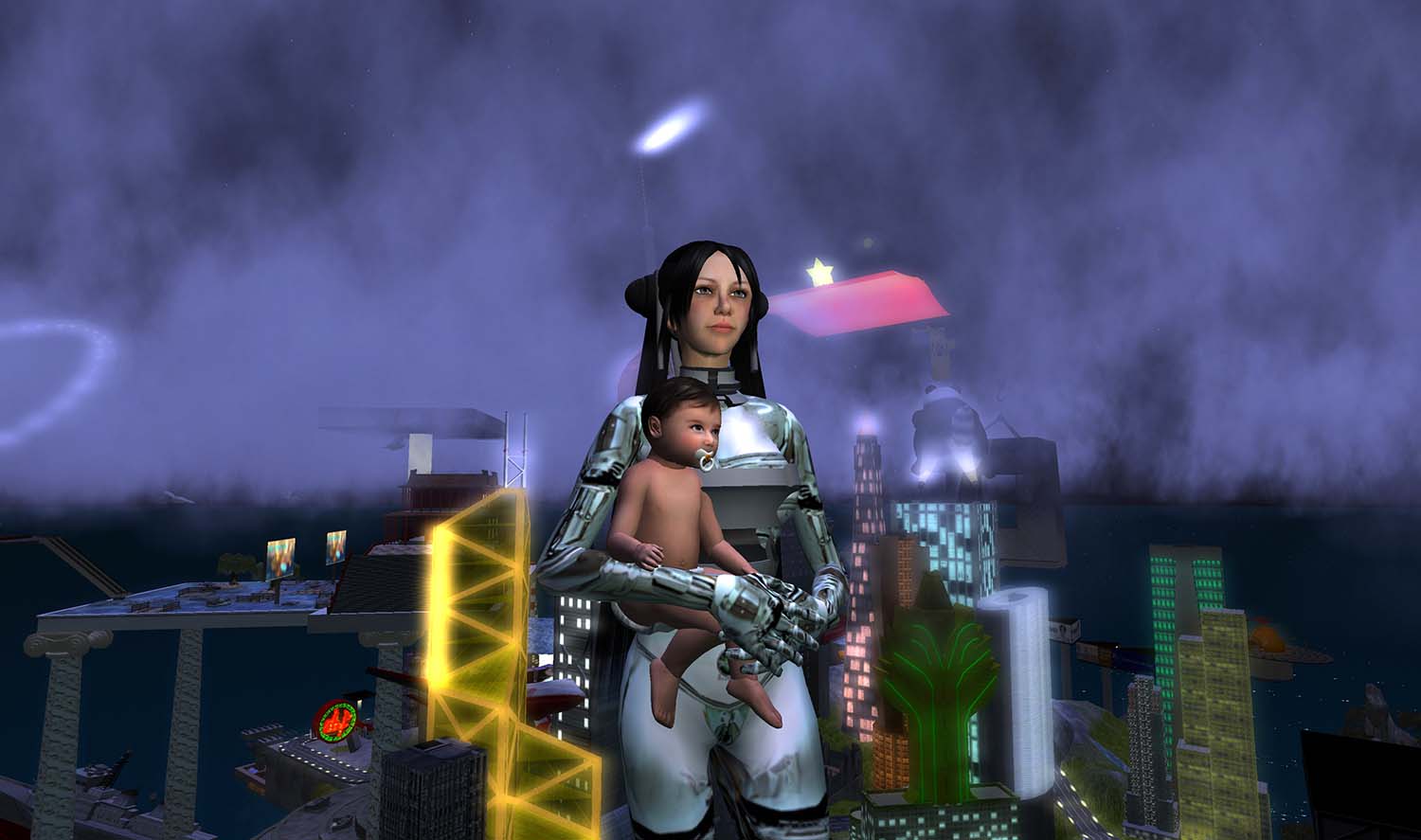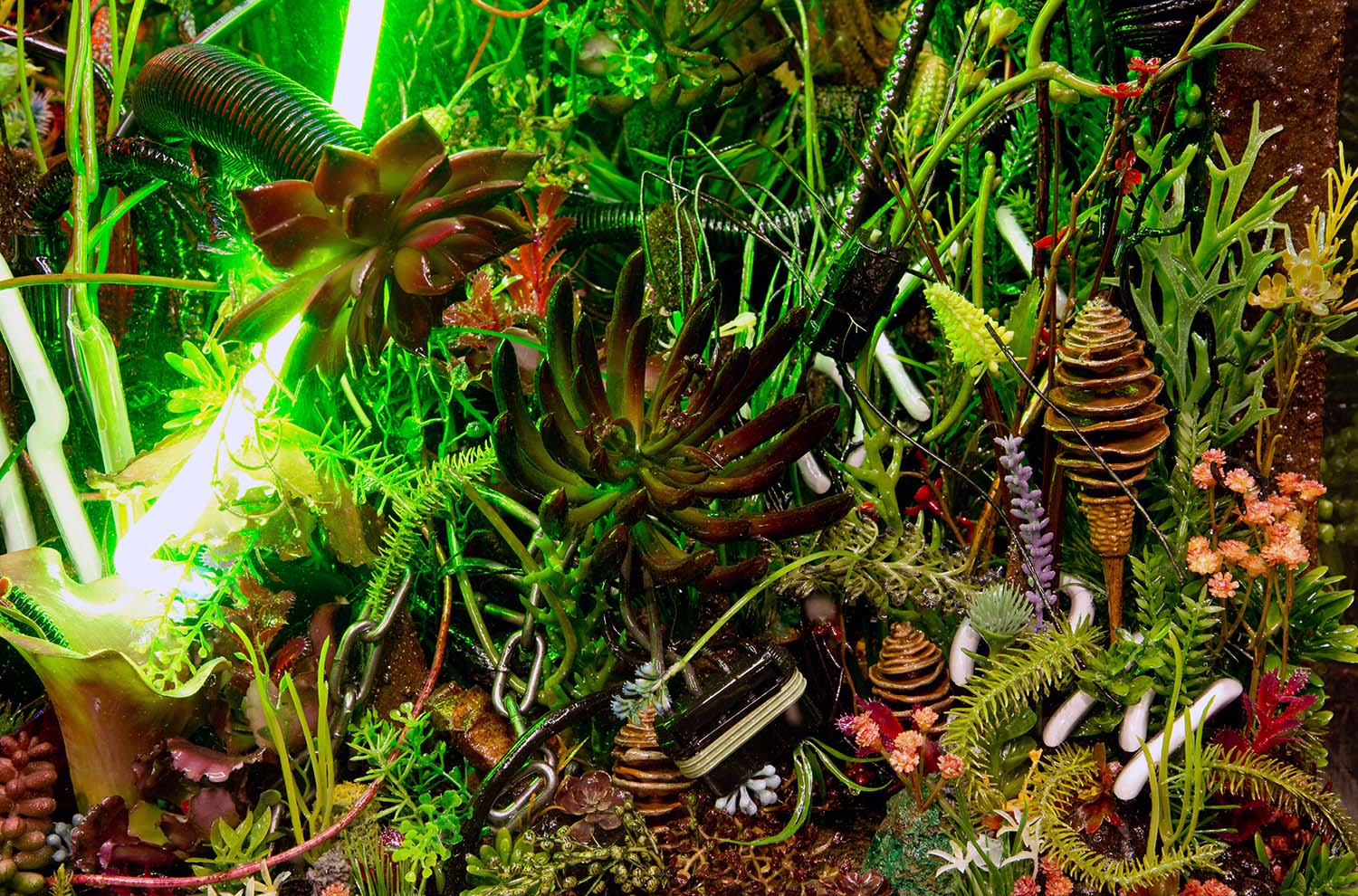This ambitious project stacks three different exhibitions one on top of the other, with “Being There,” a distillation of three generations of South African artists, wedged between shows of African art collected by Jean Pigozzi and the Fondation Louis Vuitton. This structure poses a synecdochic problem: How far might the specific experience of South African artists be extrapolated to a history of the continent as a whole?
There are inherent risks in the analogy drawn by the Fondation’s artistic director with last year’s show of contemporary Chinese art, of individual artists being subsumed and marketed under a generalized African banner, and of the political problematics joining China to Africa being neutralized.
Yet the work is breathtaking. From top to bottom –– literally, in the case of Romuald Hazoumè, whose glaring, Yoruba-inflected jerry-can masks bookend the exhibition –– there is a nervelessness to the production of new form and in the wielding of old media. The constructions of Bodys Isek Kingelez and Rigobert Nimi, along with the technical drawings of Abu Bakarr Mansaray are uncanny exercises in futurology from found materials and textbooks; while all the painters here, from the watercolours of Barthélémy Toguo to the canvases of Chéri Samba and Lynette Yiadom-Boakye, to the “Drag Paintings” (2016) of Moshekwa Langa, are uniquely canonical.
From its palimpsest of staggered personal histories, “Being There” reveals a complex of artists’ responses to a South Africa “caught,” in the words of Achille Mbembe, “between an intractable present and an irrecoverable past”. While a series of photographs by artists of the generation “born free” of apartheid betray ambivalence, towering portraits in different media by Sue Williamson, Zanele Muholi, and Thenjiwe Nkosi cohere new identities.



